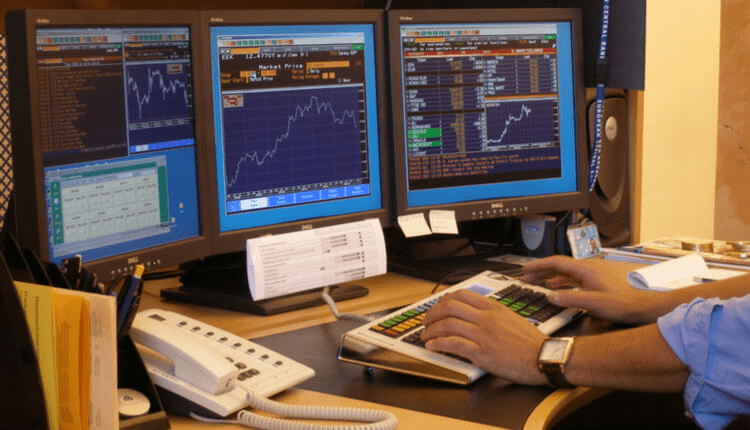Technical Analysis: Much More Than Just A Trading Tool
May 18, 2018 | 16:06 PM IST
May 18, 2018 | 16:06 PM IST

Trading is exhausting. You have to enter a position and have to stay glued to your screen till your target is reached. If the stock/index is moving against you, you have to employ your hedging strategies. While walking this tightrope many traders (included professional traders) take a nasty fall every day and have to end the day by booking big losses. In the crowd of traders, the minority that stands out is of those traders who manage to make their trading profitable. The number of profit-making traders is awfully low, but they make a perfect case-study for us to understand what it takes to become a successful trader. Certainly, if they are getting more trades right than wrong on the regular basis, we can discount the luck factor. In that case, there ought to be a tool in their armoury which helps them climb the greasy pole called trading.
That tool is Technical Analysis.
Those who have fluency in technical analysis enjoy higher success in trading. However, mastering technical analysis doesn't just mean reading up the price action data on the candlestick charts but it is about interpreting it in line with historical data and identifying the trends which are forming on the charts.
Let's take a closer look at technical analysis and explore its utility for your trading and investing activities.
Contents
What Is Technical Analysis?
Technical analysis can be explained with the help of an analogy. You want to buy vegetables, so you go to a popular vegetable mart of the city. Upon arrival, you realise that there are too many vendors selling veggies. In the clamour of hauling and haggling you are unable to make up your mind about which vendor has the best and fresh veggies. To find out, you can visit every vendor and check the rates and freshness of the veggies on the display. But as there are too many vendors, visiting all will not just be exhausting and time-consuming but virtually impossible. Thus, to reduce the groundwork you just gaze around and try to locate one vendor that is attracting maximum crowd. Once you find him, you are free to assume that the reason he is getting such footfall means he has garden-fresh veggies and he is selling at a competitive price.
This is exactly what a technical analyst does. He/she without getting into the financial details of the company like checking balance sheets and cash statements, analyse the company on the data that is available on the technical chart. Through a chart, he/she assesses stock's volume, trends, price movements, moving averages, etc. Based on this data, a trader has to take a call whether to take a long position or a short position or not to take any trade at all.
Going back to our analogy, what happens when you visit the vendor which is attracting the maximum crowd? There are chances that you will get the best quality veggies at a reasonable price. However, there is also a fair chance that you will realise that rates are low but the quality of the veggies is poor. That explains the big crowd.
Like many things in life, technical analysis is not foolproof. It doesn't always give the right indication. It is, at the best, a reflection of the behaviour of the traders. As it is observed that human nature reacts in a certain manner to greed, fear and uncertainty, the technical chart (A candlestick chart) mirrors traders' behaviour when stock prices move up and down. It is important to understand that technical analysis of stocks works on certain assumptions. One of the assumptions is that history repeats itself. These assumptions are the foundation to all the trends, breakouts, reversals that one sees on charts. They are not conclusive but they do give a sense of the direction in which the wind is blowing.
Assumptions Of Technical Analysis
Any theory which attempts to anticipate the events of future based on the present and past data hinges on certain assumptions. Technical analysis is the tool to understand the most likely event that may happen in the course of trading. Naturally, it comes with its set of assumptions.
Markets Discount Everything - This is one of the critical takeaways from the Dow theory. It simply means that all the information which is in the public domain is already factored in by the market and it reflects on the chart of the respective stock and index. For example, if Tata Motors is set to announce an excellent quarter earning, some traders will start buying huge quantities of Tata Motors. As the buyers start to gain weight, the price starts movings up. Thus giving an indication to technical analysts that Tata Motors is good for a long position.
Price Movement Happens In A Trend - The entire theory of technical analysis is based on trends. The price keeps moving all the time but a conclusive indication for a trade is given only when the price is moving in a trend or at least is confirming a formation of a trend. If you look at the Nifty chart from February 2017 till date you will see a steep downtrend till mid-April. This downtrend happened in phases, in other words - in trend. The role of the analyst is to identify the trends and trend reversals. There are various indicators and oscillators to determine the trend.
History Repeats Itself - All the theories of technical analysis are based on the assumption that price trend repeats itself. This is because all the market participants - buyers & sellers - tend to react in a similar manner whenever price moves in a certain direction. As the technical chart is a mere reflection of the behaviour of the traders, it forms similar patterns on the chart.
Key Concepts Of Technical Analysis
Volume - Volume is simply the number of shares that change hands every day at the stock exchange. The volumes have a huge significance in technical analysis. High volume stocks enjoy high liquidity. In technical analysis, a trend cannot be confirmed if it is not supported by a spike in the volume. Like this, in many other theories, volume plays a key role.
Support & Resistance - Support-resistance is the key concept which signifies the demand and the supply of a stock. Support and resistance are the natural boundaries for the falling and rising stock. It is important to understand here that the term demand is used to refer to bullish sentiment in the stock while supply is in reference to bearish sentiment of the stock. A stock never rises or falls in a straight line, it goes up and down in phases. When a falling stock comes to a point where its price action stabilises it is called a support level of the stock. It is a level where buyers become stronger and sellers are less inclined to sell. Similarly, when a rising stock reaches a point where its price starts to consolidate, it is called a resistance level. Here sellers start to become stronger and buyers are less inclined to buy. Thus the price goes sideways. In technical analysis, support-resistance plays a critical role in determining entry and exit points.
Types OF Charts
The playground of all the technical analysts is the chart. Because of the intensive use of charts, technical analysts are also referred to as chartists. There are various chart types like a line chart, bar chart, Heiken Ashi and candlestick chart. Let's briefly understand what is the difference between these charts and which is the most preferred chart type of the traders.
Line Chart - The most basic chart type is a line chart. Line chart follows the closing point of the stocks/index. For the chart formation, a dot is placed at the closing point and the dots are traced with a line. The good thing about the line chart is that it gives a clear indication of trend i.e. uptrend or downtrend. However, it doesn't give any more information other than the closing point. Due to these limitations, a line chart is not used by most of the professional traders.
Bar Chart - Bar chart is one of the advanced trading charts. One of the distinct qualities of a bar chart is that it indicates closing, opening and high and low of the stock and index. OHLC (Open, High, Low, Close) data is critical for the traders to make a profitable trading strategy. All these points are captured in a bar chart. In a bar chart, if you are viewing a day chart, a single bar will represent a day's movement of the stock. Similarly, there are 1 mins, 3 mins, 15 mins 1 hours, daily, weekly and monthly time-variants available.
Candlestick Chart - The favourite chart type of most of the professional traders is candlestick chart. A candlestick chart is just like a bar chart but it is visually more appealing as it boldly conveys the price movement of a stock. A candlestick chart is the most preferred chart of all the traders as it perfectly tells the story of stock and index in the most visual manner. In a candlestick chart, if you are viewing a day chart, a single candle will represent a day's movement of the stock. Similarly, there are 1 mins, 3 mins, 15 mins 1 hours, daily, weekly and monthly time-variants available.
Limitation Of Technical Analysis
Trends Can Be Misleading- Technical analysis is nothing but an interpretation of the historical data. The price action moves in a certain pattern which is called a trend, though it's not necessary that a trend will always behave as it had behaved earlier. The important point to understand is that trends come into existence because a large number of traders react in a similar manner to the price movement. However, in some instances, they might react in the very opposite way of what is expected. In such scenarios, the trend can mislead you into taking a wrong trade.
Too Many Conditions - To get your technical analysis right you have to check many boxes. It simply means that even if you find a trend on the chart, it has to be checked and confirmed on various parameters like the volume should complement the trend, etc. For example, if Asian Paints stock is rapidly moving in an uptrend, there should be a significant spike in the volumes of the stock to explain the price movement. Like this, there are many things which have to work in sync with other corroborating elements of your trading strategy.
Irrelevant In Big Events - As the foundation of the technical analysis is that all the theories will work if all things remain constant. This means, even the most conclusive trend formation will not turn out as it should if some extraordinary events take place. For example, if the stock is moving in agreement with all the indicators and volume is supporting the trend. However, out of a blue, a news breaks that government has announced Demonetisation. In the light of this news, stock/index will defy all the trends and patterns and moves as per the new market sentiment.
Technical Analysis (TA) Vs Fundamental Analysis (FA)
There is sea difference between TA and FA. TA is a study of charts which is used to identify near-term investment and trading opportunities. Whereas fundamental analysis is a thorough and intensive method of analysis in which the stock of the company is subjected to intense scrutiny. The charts and trends have no relevance in fundamental analysis. FA emphasises on financial statements like balance sheets, Profit and Loss statements, cash flow statements, etc. More than methodology it's important to understand what these streams of research seek. Technical analysis' role is just to find the right entry and exit point while fundamental analysis looks at a bigger picture and tries to identify the future growth potential of a company on the long-term basis.
| Fundamental Analysis | Technical Analysis | |
|---|---|---|
| Meaning | A method to evaluate the companys financials to find the intrinsic value of its stock and the growth potential of the company on the long-term basis. | A statistical method to find the trend and interpret it on the basis of past market data. |
| Method | Financial statements review, industry trend, ratio analysis, peer group review and understand the present and future economic outlook. | Trend identification through price movements and market psychology on the technical chart. |
| Time Horizon | Seeks to understand the long-term investment potential of the company. | Seeks intraday and short-term trading and investment opportunities. |
| Objectives | In-depth research for the purpose of investment. | For traders - intraday and short-term trading opportunities For Investors - entry and exit points |
| Data Gathering Tools | Financial statements i.e. balance sheet, P&L statements, cash statements, financial ratios, etc. | Candlestick charts, support-resistance, moving averages, RSI, etc. |
| Concepts Employed | Return on Equity (ROE), Return on Capital Employed (ROCE) Price To Earnings (PE), etc. | Dow Theory, Price movement data |
| Principal Goal | To find the intrinsic value of the stock | To find exact entry and exit points |
How To Use Technical Analysis For Trading?
Technical analysis is the most important tool used for Intraday trading. Usually day traders use the 3 to 15 minutes candle to identify any trend on the charts. Once the trend is identified, it needs to be run through all the checks which will further confirm that trend. One of the most critical tools for trend identification is the price movement. The price is closely checked on the technical indicators like moving averages and Relative Strength Index (RSI) (We will learn about indicators in detail in next chapter of technical analysis). The point where all the technical indicators are in agreement is the point to enter the trade.
Technical charts can used for Positional trading positional trading too. As day traders use the small candles, positional traders can also make a good use of technical charts by using daily or weekly candles. The focus of an intraday trader is to chance upon small price movement in a single trading session. On the other hand, a positional trader tries to find profitable trading opportunities in the span of few days to few months, but not more than that.
Technical Analysis For Investment
This might surprise you but the role of technical analysis is not restricted only to trading. It is true, to understand the Long-term investment potential of a company you have to read all the financial data of the company of last several years (5 years, at least). There is no shortcut for that route but once you are done with the valuation of the company, you come to a point where you have to enter the stock. At this point, if you analyse the price movement on the chart, you can find the ideal entry point. A stock, however fundamentally good it may be, can be in the downtrend due to some prevailing reason. The prudent thing to do is to let the stock bottom out and enter at a support level. Similarly, while exiting a stock, technical analysis can be used to ascertain the right time to book profits in the stock.
There are many people who spend a lot of time debating about how fundamental analysis is better than technical analysis and vice versa. But the fact is these two methods are not alternatives to each other as they serve different purposes. In fact, if used wisely, both can complement each other like it did in the example above.















